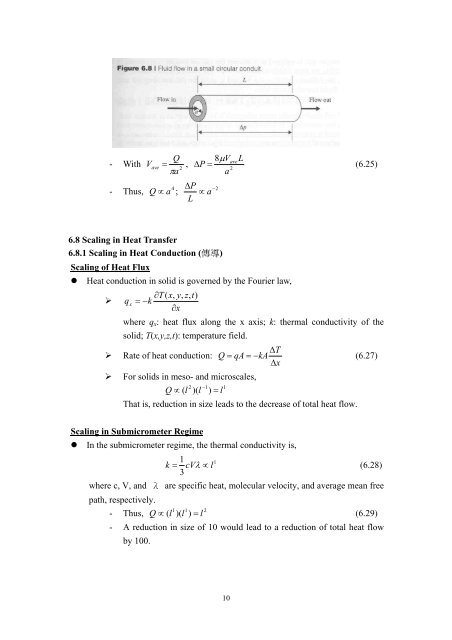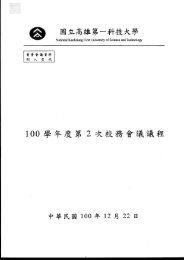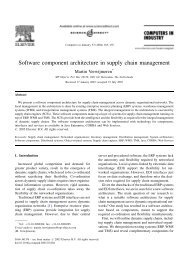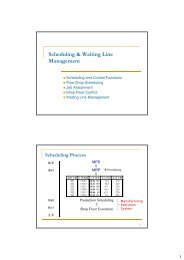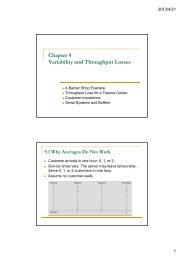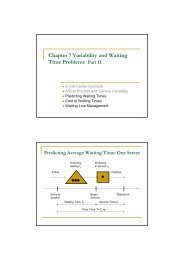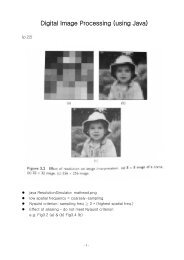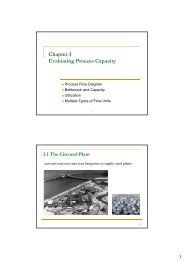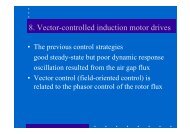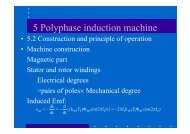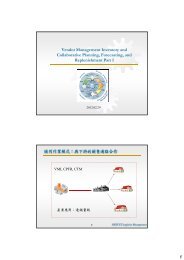Chapter 6 Scaling Laws in Miniaturization
Chapter 6 Scaling Laws in Miniaturization
Chapter 6 Scaling Laws in Miniaturization
Create successful ePaper yourself
Turn your PDF publications into a flip-book with our unique Google optimized e-Paper software.
Q- With V = aveπ2a, 8µVaveL∆ P =(6.25)a24- Thus, Q ∝ a ;∆P∝ aL−26.8 <strong>Scal<strong>in</strong>g</strong> <strong>in</strong> Heat Transfer6.8.1 <strong>Scal<strong>in</strong>g</strong> <strong>in</strong> Heat Conduction ( 傳 導 )<strong>Scal<strong>in</strong>g</strong> of Heat Flux• Heat conduction <strong>in</strong> solid is governed by the Fourier law,∂T( x,y,z,t)‣ q x= −k∂xwhere q x : heat flux along the x axis; k: thermal conductivity of thesolid; T(x,y,z,t): temperature field.‣ Rate of heat conduction:‣ For solids <strong>in</strong> meso- and microscales,2 −11( l )( l ) lQ ∝ =∆TQ = qA = −kA(6.27)∆xThat is, reduction <strong>in</strong> size leads to the decrease of total heat flow.<strong>Scal<strong>in</strong>g</strong> <strong>in</strong> Submicrometer Regime• In the submicrometer regime, the thermal conductivity is,k131= cVλ ∝ l(6.28)where c, V, and λ are specific heat, molecular velocity, and average mean freepath, respectively.1 1 2- Thus, Q ∝ ( l )( l ) = l(6.29)- A reduction <strong>in</strong> size of 10 would lead to a reduction of total heat flowby 100.10


